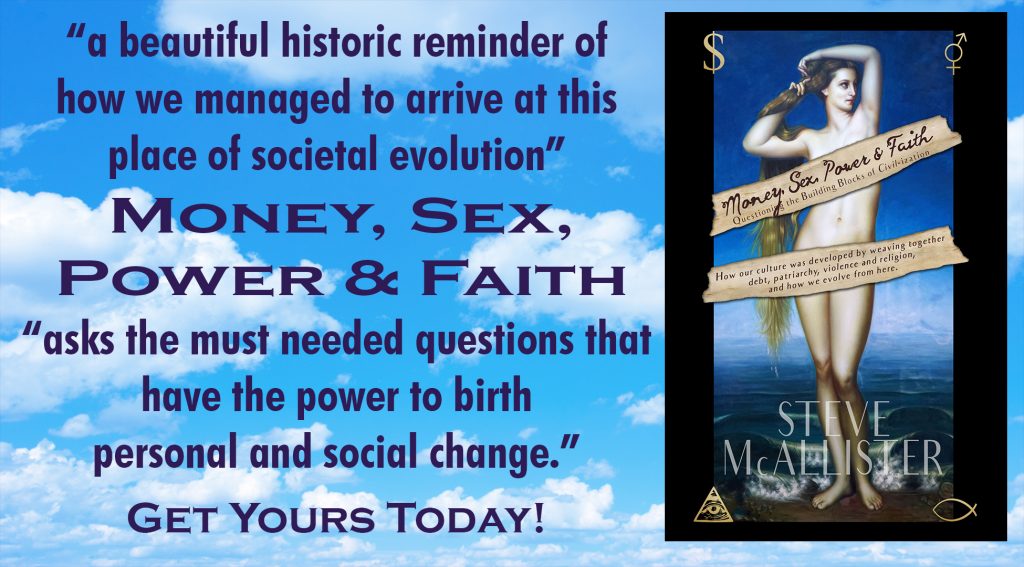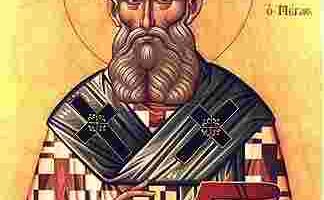The following is a chapter from Money, Sex, Power & Faith.
Order your copy in paperback or for Kindle!
How were the 66 books of the Bible chosen and how did they get to be considered “perfect, infallible, and inerrant?”
“It ain’t those parts of the Bible that I can’t understand that bother me, it is the parts that I do understand.” – Mark Twain
There was a movement in the early Christian church led by Marcion of Sinope to release adherence to the Jewish scriptures and develop a purer Christianity without the wrathful influence of Jehovah. After all, under Christianity’s new covenant with God, books like Leviticus probably seemed as irrelevant then as they seem today. However, Marcion was ultimately dismissed as a heretic, and Judaism continued to be incorporated into Christianity. Most of the churches had found quite a few writings they agreed on, and in 367 AD, Athanasius of Alexandria released the 39th Festival Letter in which he listed out the 66 books that would eventually be agreed upon by the Pope to become the biblical canon about 2 centuries later.

It is interesting to note that the word “canon” was taken from the Greek kanon, meaning “measuring rod,” again referencing how economics and accounting played a role in the development of a masculine religion, and how much men love to measure things. Regarding the selected scriptures, Athanasius wrote, “These are fountains of salvation that they who thirst may be satisfied with the living words they contain. In these alone is proclaimed the doctrine of godliness. Let no man add to these, neither let him take out from these. For concerning these, the Lord put to shame the Sadducees, and said, ‘Ye do err, not knowing the Scriptures’ and He reproved the Jews, saying, ‘Search the Scriptures, for these are they that testify of Me.’”
Unfortunately, there were quite a few books that were left out, and once the papacy agreed with Athanasius about which books would be favored, although some were still revered enough to be considered apocryphal, a great many of them were considered heretical. However, some of the books continued to be used through 1546, when the Protestant Reformation forced the Roman Catholic Church to put together the Council of Trent to better organize their members and donors.
Many of these books now seem to be viewed as little more than fan fiction, nevertheless, they offer interesting glimpses into the huge gaps that exist in the Bible. For instance, The Life of Adam and Eve and The Book of Jubilees expand on the relationship between the planet’s first couple and Eve’s continued issues with the serpent. They also explain how Cain went on to populate the planet by marrying his sister, the ninth child of humanity’s introductory duo. Answering the question about what Jesus was like as a child, the Infancy Gospel of Thomas accounts for Jesus at the ages of 5 and 8. As he starts to stretch his new powers by presumably pushing one of his friends off of a roof and raising him from the dead, and as he gives in to the temptation to use his abilities for evil by striking someone blind for criticizing his step-father’s craftsmanship.
In the first century of Christianity, as with the first few centuries of Judaism, most of these stories were passed on by oral tradition. Although the fundamentalist belief developed by the Church states that no human errors occurred throughout this process, and every word of the Bible is the entirety of God’s truth, there are many who question how much of the narrative was fabricated by the active imaginations of storytellers wanting to add in a new spin on the tales before they made their way into ink. In the early days, before Athanasius declared which books were actually written by God, early Christians had a nice run of being able to choose for themselves, more or less, which accounts of Christ they preferred. Athanasius, nicknamed the “Black Dwarf” by his critics, yet highly revered throughout the Church as a great writer, selected his 27 books of the New Testament, and decided only 4 of them would be actual accounts of the life of Christ. The majority of them, like Athanasius’ writings themselves, were a bit more concerned with theologizing, like the 13 letters of Paul, who never actually met Jesus face to face, and the 8 letters of the other apostles.
In whittling down the choices of books Christians could now choose from, the Church disavowed the gospel accounts of Mary Magdalene, Thomas, Philip, Peter, the Egyptians, and a great little question and answer session between the 12 disciples and Jesus called The Sophia of Jesus Christ. These and many more books were hidden away, most likely for fear that they would be destroyed, and not read again until the 19th and 20th centuries. Yet because Christianity is the one religion with eternal consequences that leave little margin for error, most believers were content to dismiss these other ancillary accounts and limit God’s chosen narrative to the collection of writings we now know as “The Bible.”
Order your copy of Money, Sex, Power & Faith today!



